This will come as no surprise to anyone but New York City has a rat problem.
Two million rats call the city home, thriving on the streets, in sewers, in both abandoned and un-abandoned buildings, in the parks, in the subways, in shoe stores and in restaurants.
The problem is getting worse. Rat sightings increased by 40% in the first 11 months of 2021 compared to 2019, apparently spurred by cuts to trash collection and street-cleaning services. At the same time, the pandemic-induced closure of restaurants deprived rodents of a regular source of food, leading to hungry rats being forced to travel further, and more openly, in search of nourishment.
But rats are hardly a new issue in New York. For centuries they have presented a seemingly unsolvable problem, despite a variety of efforts. Mayor Bill de Blasio launched a $32m rat-tackling effort in 2017, and workers laid more rat poison and traps. The sanitation department has blasted dry ice into rats nests. Building owners have been fined into cleaning up their trash, while at least one heron has leant a hand, swallowing a rat in one gulp in Central Park.
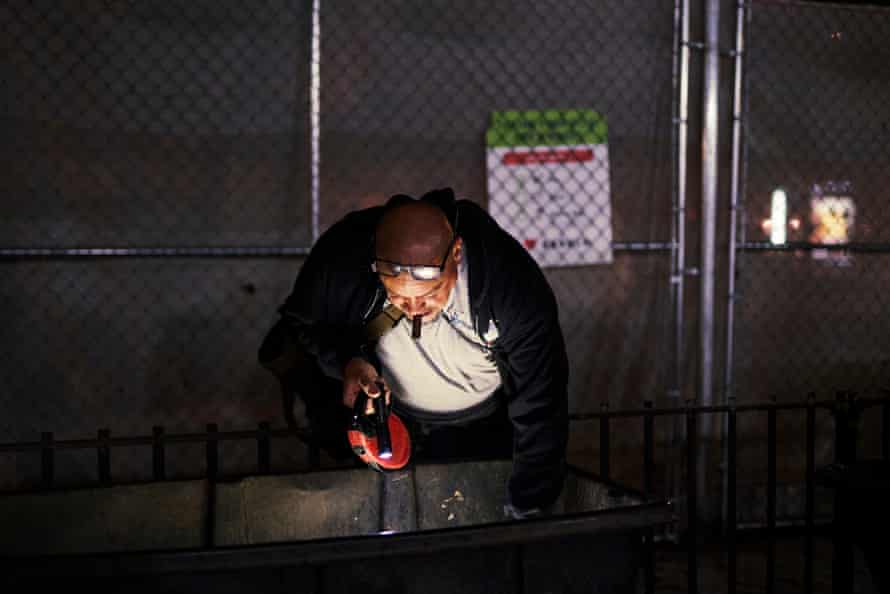
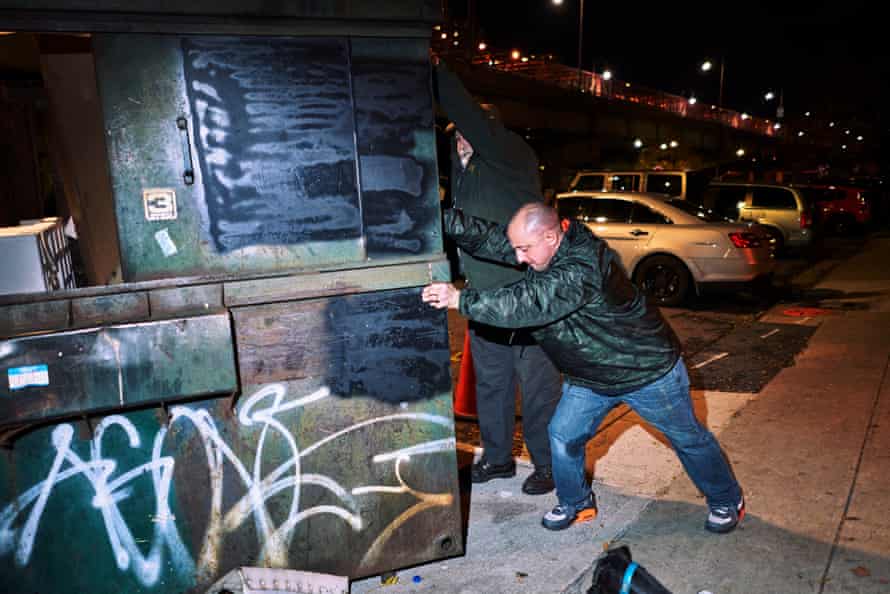
None of it has really worked, which is where Rats comes in. The group has been hunting rats with dogs in New York since 1995, operating a sort of canine-vigilante service, summoned to infested neighborhoods via Facebook or email. The Rats method of rat control – documented in grisly detail online – isn’t for everyone, but it receives scores of requests from New Yorkers each year. In a city this rat strewn, it seems people are willing to try anything.
The group conducts most of their hunts on Friday nights, which is when I find myself standing outside an apartment building in the Lower East Side, flanked by some of the hunters.
There have been seen signs of a rodent in a fenced-off area, and a Rats operative squeezes through a couple of fence panels with his dog, intending to flush the rat out.
On the other side of the fence we wait: eight people with eight dogs straining at their leashes, and me, standing there with my pants tucked into my socks, holding an iPhone. The dogs, all terriers, have quite literally smelt a rat, and are yapping and hopping about.
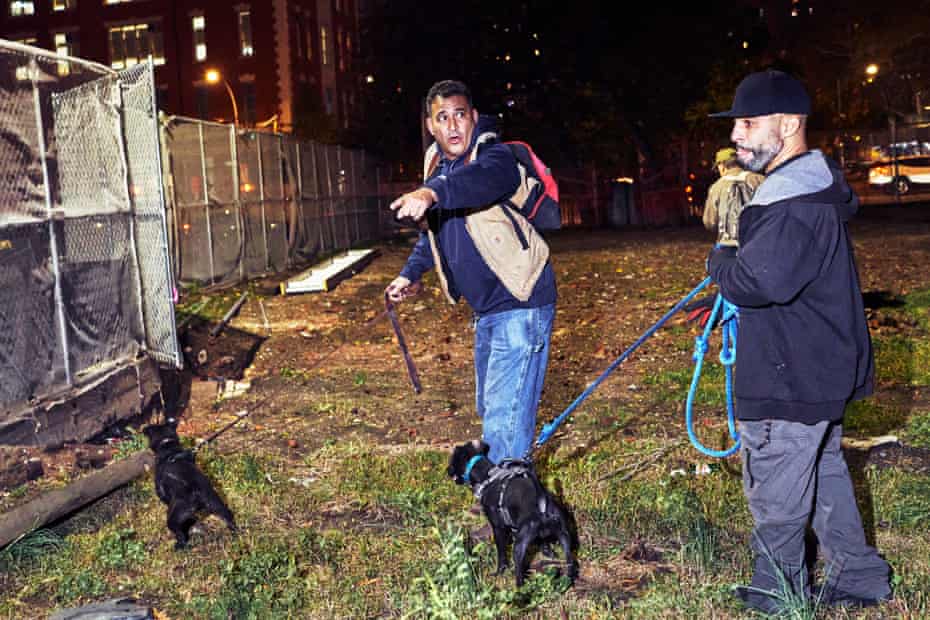
All of a sudden, there’s action. The sound of scurrying approaches the fence, and a small furry thing – a rat – scampers out from under the fence.
It pauses, surveying the scene, and sprints straight at me. As the only person not tethered to a spirited dog, the rat has appeared to see me as its best chance of escape. With a leap and barely suppressed squeal I evade the rat, but it’s a close call.
“You let it get away!” someone shouts, possibly at one of the dogs. I look around apologetically. This rat, like several others this night, will live to see another day.
New York City rats
Rats are not native to North America, but have been present in New York since the 1700s. The city’s rat population is dominated by the Norway rat, Rattus norvegicus, a brown rat native to China, but spread around the globe by Norwegian sailing ships. According to Columbia University, Norway rats arrived in the US on boats sometime around 1776, transported in boxes of grain by German soldiers recruited by the British to fight American colonists.
Since then, they have spread far and wide, but at least today the city is better equipped to deal with the problem. In 1860, the New York Times documented the rat issue, in an article headlined: “THE CASE OF THE NEW-BORN CHILD GNAWED BY VERMIN”. The unfortunate child died after being “mutilated by rats” at Bellevue hospital, located in midtown Manhattan.
“The rats at Bellevue are a bold and reckless race, and do not hesitate to come forth from their hiding places, and scamper about even in the presence of men in high position,” the Times reported.
There have been no recent reports of death by rat – although bites are relatively common – but the rats remain bold, and continue to show disdain for men in high position.
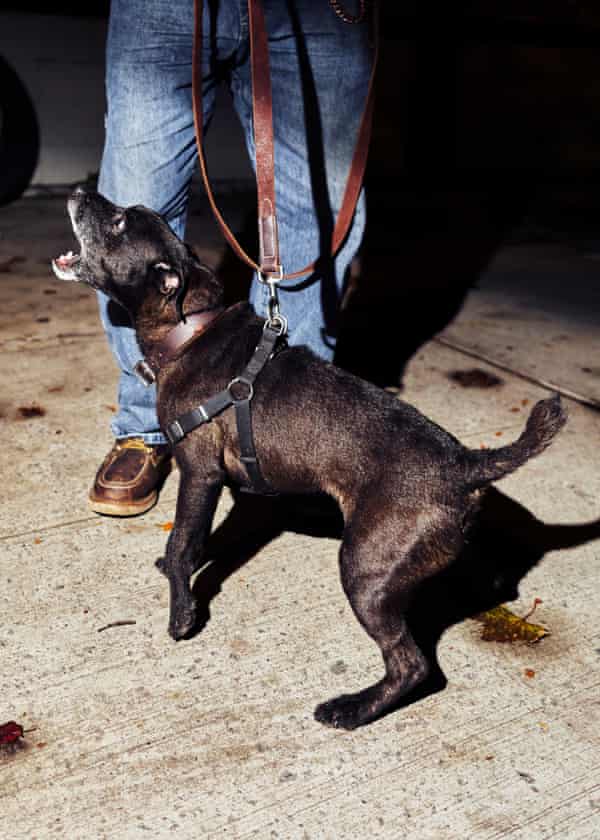
That’s something that has upset Eric Adams, Brooklyn borough president and New York’s incoming mayor. He was highly critical of the city’s approach to rats during the mayoral election campaign this fall – in one speech Adams listed de Blasio’s $32m efforts before adding: “All of these devices and items are unsuccessful”.
Instead, Adams has come up with a plan of his own, which involves the use of a sort of rat bucket.
The device lures rodents in with the promise of food, then dumps them, via a trap door, into a liquid. The rats then die. According to the manufacturer, more than 30 rats can be caught in the bucket before it has to be emptied.
The next mayor is extremely enamored with the rat bucket, lauding it at length over the past two years, and he even demonstrated the device at a press conference a couple of years ago, where Adams’ team said they had placed five of the buckets around his Brooklyn office building.
In a tacit admission of the scale of the task, however, a spokesman later admitted that one of the buckets had already been broken – by a big rat.
A rat bolts out of its hole …
Back in the Lower East Side, our problem is too few rats, not too many.
We’ve spent half an hour walking through high rise public housing buildings, where rats have been a big problem in the past. But there’s little evidence of the alleged rat increase.
“Worst night of the year,” says Richard Reynolds, the de facto leader of Rats, as we walk from one fruitless spot to another.
“Usually we’d have 20 by now.”
By my count, we’ve got two, but the hunt is gearing up. Reynolds, a dog show judge and dog breeder who prior to the pandemic taught a course in dog breeding in Beijing, has been at this a long time, and leads us to one of his most successful hunting spots: a big green dumpster, with a small drainage hole in one of the lower corners.
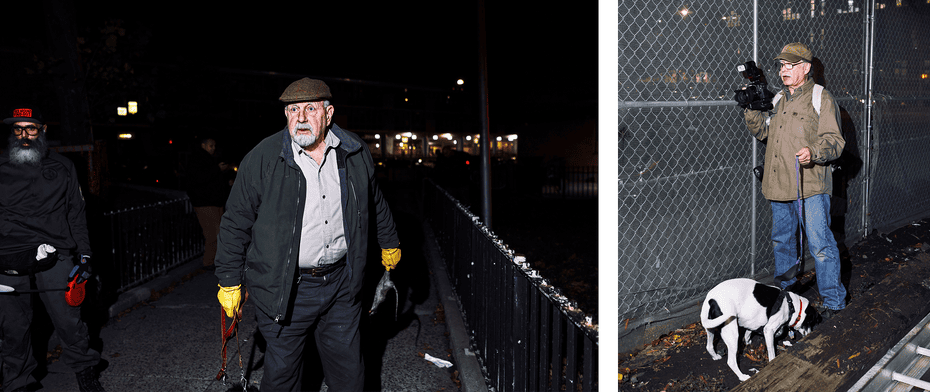
“The record coming out of that hole is 53 in one night,” Reynolds says.
Reynolds, a burly guy wearing a flat cap and slacks, and Jimmy Hoffman, a veterinary technician from Queens, stand either side and rock the dumpster, which is more than 6ft tall and about 12ft long, back and forth. Nothing happens, apart from the dumpster coming close to crushing Hoffman’s Nike Air Max-clad foot.
Undeterred, the pair rock it again. Bingo. A rat bolts out of the hole, runs straight through the group of waiting dogs, and makes good its escape under a nearby car. “They nest up in the engine,” Jason Riviera, an electrician from Queens said. The rats can chew wires under the hood of the car, damaging various components. According to Reddit, peppermint oil or powdered fox urine can be used as a deterrent.
Reynolds’ and Hoffman’s rocking continues. Another rat bolts out and is snaffled by Hoffman’s Patterdale terrier, Mighty. Then another, scooped up in the jaws of Bustelo, a Patterdale named after the popular coffee brand.
“When I first saw him he was so hyper it’s like he was on coffee,” Efren Reyes, Bustelo’s owner, says.
Bustelo apparently loves these excursions. “In the house he lays down on his little pillow. As soon as he sees me grab the leash, he’s up, he’s excited,” Reyes says.
Rats has been good for his owner too. Reyes, 44, lost his job as a restaurant chef during the pandemic, and is still out of work. It was only then that he started bringing Bustelo out to chase rats.
“It helps me keep myself composed,” Reyes begins to tell me, but he never finishes the thought because Bustelo has grabbed another dumpster rat, and needs a lot of cajoling to let it go.
A total of five rats are caught from the dumpster, which is a disappointment to both dog and owner. Nevertheless, the dead rats are dutifully deposited into a weather-beaten waxed canvas backpack, carried by Greg Conception, a cigar-smoking union electrician who appeared to have drawn the short straw. By 11pm, the bag count was a paltry seven rats.

Despite the group’s poor tally, the New York health department admitted that “neighborhood rat activity is high in many areas of NYC currently”.
“We have observed higher than usual numbers of properties failing inspections for rat activity and for conditions conducive to rats like garbage and harborage,” Shari Logan, a spokeswoman, said in an email.
Logan said that de Blasio’s costly “Rat reduction plan” had been a success, at least through the end of 2019. Calls to 311 were down, and the number of rat burrows in parks and NYCHA developments declined. But then the pandemic hit, and services were scaled back. Logan said that, combined with a “wetter, warmer and longer summer”, was responsible for the rise. The proliferation of outdoor dining options during the pandemic didn’t help, with diners sharing horror stories about rats popping up on tables and scurrying up legs.
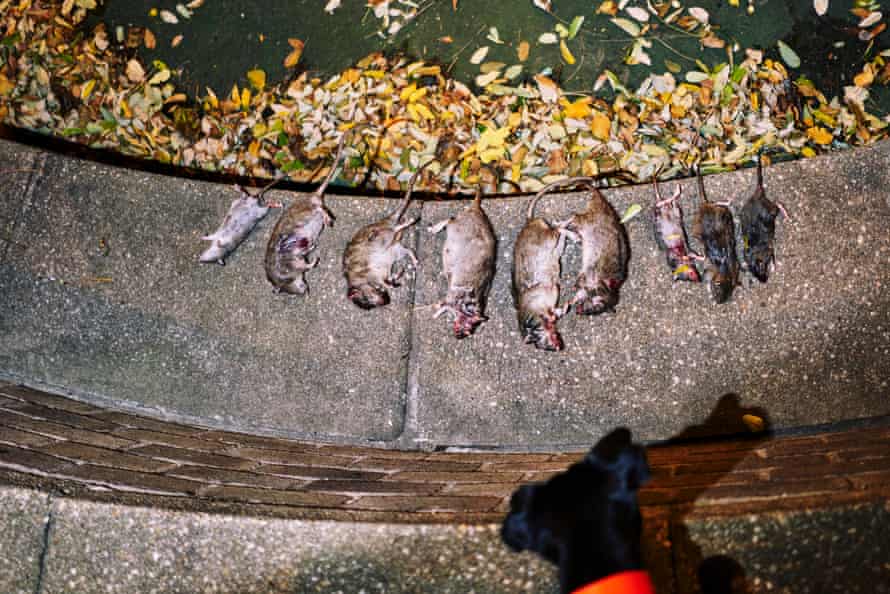
Top ‘vigilantes’?
Hunting rats with dogs is not for everyone. Reynolds said animal rights groups, in particular, were unimpressed.
“Rats are simply trying to eke out an existence like other New Yorkers, and setting dogs on them is depraved and illegal,” the animal rights group Peta, said in an email.
“Anyone who witnesses this cruelty should alert authorities immediately, as it’s a violation of New York’s anti-cruelty law, which applies as much to smaller mammals who feel pain and fear as to larger ones such as dogs.”
“Rats mean no harm – and effective rodent control means making areas less attractive to them by disposing of trash and keeping garbage receptacles secured, not creating a vicious killing cycle that accomplishes nothing.”
During the hunt, the Rats groups walked past several police officers, none of whom showed any interest what in they were doing, and Reynolds insists nothing the group does is illegal. The New York Police Department did not respond to a request about the legality of hunting rats, but in an email the health department said it “does not recommend this practice”.
“Dogs that hunt rats may capture and kill individual rats but if the underlying conditions that attract and promote rats are not addressed, rats will continue to reproduce and thrive in an area,” said Shari Logan, a spokeswoman for the department.
“This activity also puts dogs at risk for becoming ill from leptospirosis or other diseases.”
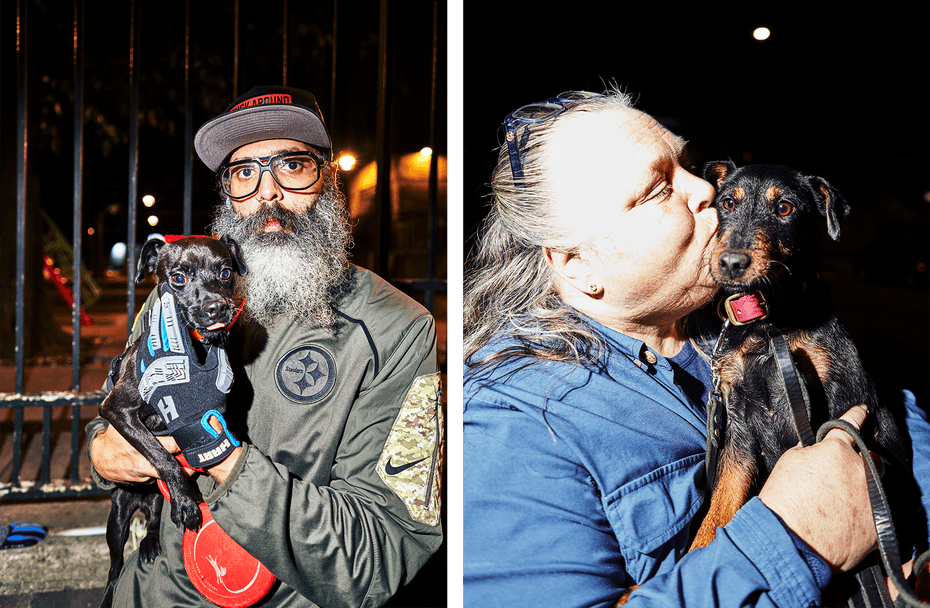
Reynolds denies there is a risk. “We’ve never had a dog hurt, we’ve never lost a dog in 30 years,” he said, although others there that night said small injuries, including rat bites to the dogs mouth, are common. Owners clean cuts after a night of hunting and treat wounds with antibiotic ointment. They insist the dogs don’t mind, and they certainly seemed to enjoy the hunt.
The dogs get a good reception, too. Everyone we came across was supportive, and Rats has even been honored from on high. In 2017 New York City councilman Eric Ulrich presented 12 Rats dogs with “Vigilante Awards” after the group successfully hunted rats in his Queens district.
Seeing the rat killing up close, however, is brutal. In a phone conversation before we met, Reynolds had described it like a science, or a slow dance. When approaching a suspected rat site, some dogs act as flushers, he said, driving the rats into the arms, or mouths, of dogs that are deemed better at killing.
But on that Friday night, at least, there didn’t seem to be much method to the process. We came across piles of trash and dogs were urged to get stuck into it to see if there were any rats.
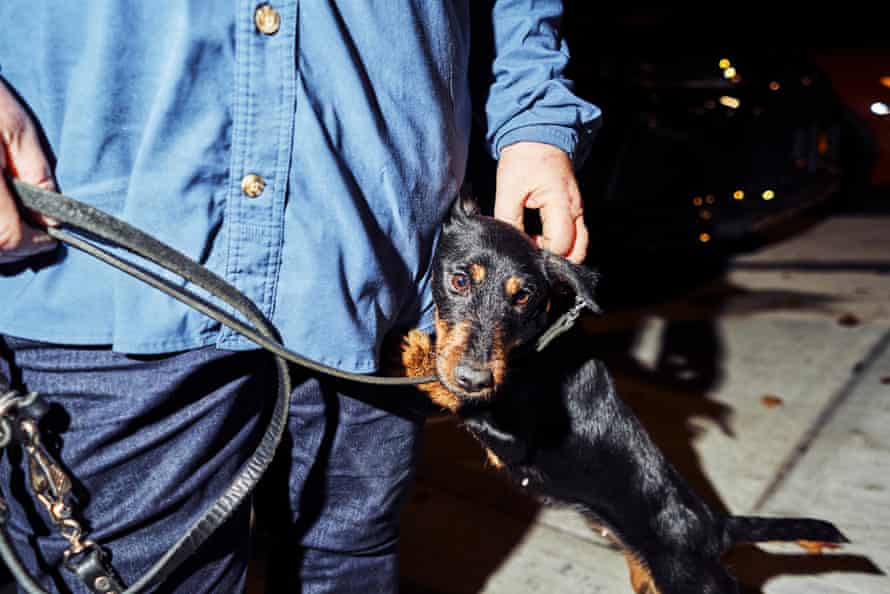
Several trash piles were left in more disarray after dogs and humans had trampled through hoping to disturb rodents. Trash cans were explored almost at random by dogs’ owners, and whenever there was a hint of rat action, people and their dogs mostly just sprinted in different directions.
The general idea is that dogs kill the rats by shaking them vigorously, breaking their necks or backs. But that doesn’t always work. One rat ended up being beheaded, while another found itself subjected to a tug-of-war between two lusty terriers.
At the end of the Rats hunt, nine rats had been caught in just over two hours. Reynolds seemed disappointed and a bit embarrassed, repeatedly referring to the bounty of nights past.
“We’ve gotten a third of what we would usually take following that route,” he said, shaking his head sadly.
“It doesn’t get any worse than this.”
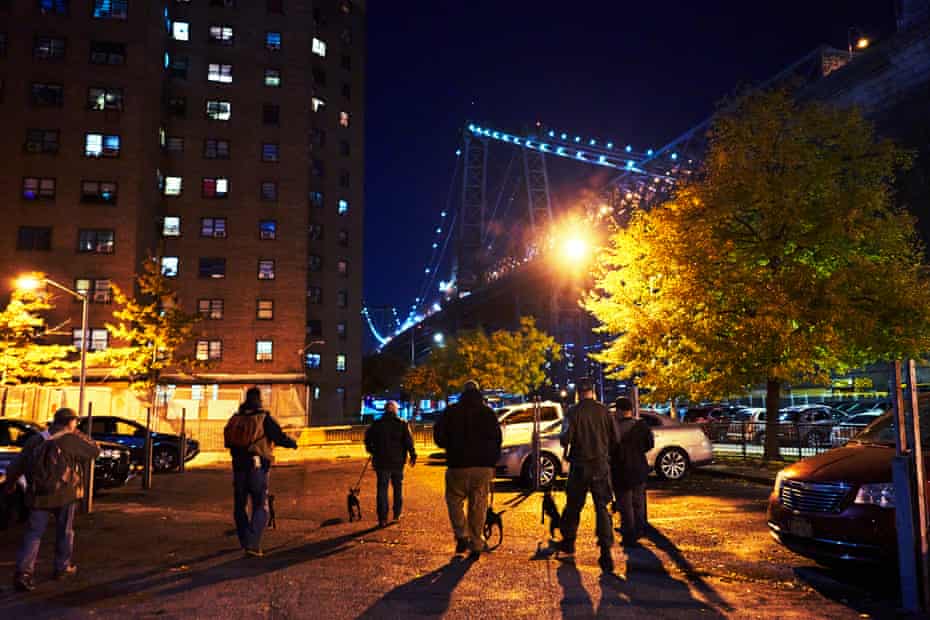
Reynolds doesn’t think the lackluster catch is evidence of the rat population declining, but he doesn’t buy that there are more rats, either. He thinks people have gotten better at reporting rats to the city, although it seems unlikely that this alone could account for the 40% jump in sightings.
It also seems unlikely that dog hunting can make any significant dent in the number of rodents in New York.
The night’s tally of nine rats, from a total of two million, was put into perspective as I idly counted the number of rats eating a donut on the subway tracks as I waited for the train home.
By the time my train came into the station, sending the gaggle of rodents into the safety of the shadows, I had counted ten.